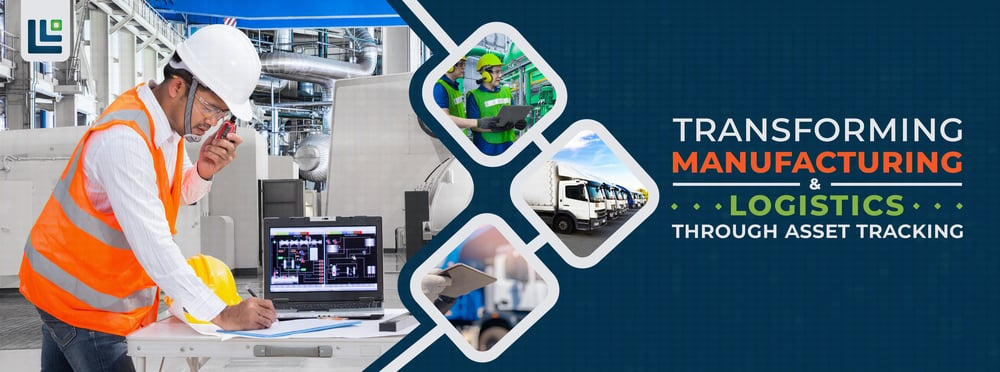Over the course of the past months, we’ve hosted a number of discussions on IoT trends. Whether a recap of 2022 or projections for 2023, we’ve outlined where trends have gone and where they’ll continue to go in the near future. But what about the more distant future? After all, no industry stays the same for long, which is doubly true of those involving technology. Is there any way to prepare for changes that haven’t yet come to pass? And is it even worth it to look that far ahead?
The Importance of Following Industry Trends
It can be easy to decide not to pay attention to IoT trends at all and to determine your company’s operations and implementation based on your own decisions. While you should always keep your own goals in mind and never cash in on a solution that doesn’t suit your needs, this is ultimately a rather naive point of view. Business does not occur in a vacuum. The most intelligent approach is to stay appraised of competitors and how different factors are impacting the outlook of the market. What are the prices of the resources you depend upon? How difficult is it to obtain these resources? How quickly does your competitor deliver to their customers? These questions and more cannot be answered by looking only at your own company’s operations – you need to maintain awareness of what else is going on in your industry and the industries that impact your operations.
Industry Trends, IoT Technology, and Your Company’s Future
For manufacturing and logistics companies, it’s important to stay up to date on the IoT industry in addition to your own industry. IoT developments have a direct impact on how both manufacturing and logistics companies can function. Many systems are designed to streamline business operations or address some of the most pressing challenges these companies face. After all, IoT aims to simplify complex processes so they can be completed more easily and consistently. This translates well into two industries that are dictated by productivity.
Staying up to date with IoT technology allows your company to remain apprised of what advancements are being made to provide value to your field and your business specifically. After all, if you wait until a new technology becomes synonymous with your industry, you’ve probably been behind the competition for a while. It’s better to stay alert to upcoming changes so you can make decisions early on rather than being alerted by the fact that your competitors are no longer having issues that you are still dealing with on a regular basis.
Join the AirFinder Difference!
- Innovation. Organizations can be freed up to innovate and bring more impactful products and services to market.
- Profitability. Increased profitability provides new opportunities to innovate and improve valuation.
- Digital Transformation. Discover competitive advantages, new revenue opportunities, improved customer relationships, and increased efficiency.
Preparing for Future Trends with Modern Technology
Some current IoT systems can also be used to help your company prepare for the eventuality of potential new technologies, even ones that haven’t been conceptualized yet. They can put you in a position to better understand your problems so that you might more readily identify and embrace a solution once it comes along. Implementing IoT now as a method of moving toward future implementation helps in several ways.
Gather operational data.
Most IoT systems allow you to compile and store data that can be later analyzed to better understand your company’s processes. What are your strengths? What are your weaknesses? What should your next priorities be to promote smooth operations and maximize productivity? The answers to these questions can be used to inform future decisions about IoT spending and implementation. It can prevent you from spending money on something that won’t have a significant impact and instead direct you toward technologies that will actually help you achieve your goals and solve your unique problems.
Prioritize continuous improvement.
The actions you take to move your company forward aren’t just about the actions themselves – they’re about what those actions mean. If you’re willing to make changes, it communicates an awareness of your company’s unique challenges and a mindset of continuous improvement. You’re not settling for just good enough – instead, you’re accepting that even when things are good, there are always ways to improve. IoT systems can provide full visibility over daily processes in such a way that allows you to identify areas in which you can attempt to improve with a more pointed, targeted solution once it becomes available for an affordable price.
Promote technological investment.
When it comes to investing in technology, the first time is always the most difficult. Not only is there a steeper learning curve for usage and maintenance, but people tend to be most resistant to the first step. By investing in an initial IoT solution with proven benefits, any subsequent implementations or expansions will be accepted far more readily. It doesn’t matter if the initial system is relatively simple or straightforward – its presence and reliable use will instill trust in technology and better equip managers and workers alike to handle any future shifts.
Asset Tracking as a Reliable First Step
Keeping track of industry and IoT trends equips companies to better respond to future trends, even ones that cannot be predicted today. Similarly, implementing a tried and tested IoT system now can better prepare you to implement newer, more specialized systems in the future. But what type of system is a reliable first step?
Asset tracking systems are highly versatile IoT systems that can be used to solve a variety of everyday problems or to simply help streamline operations to increase productivity. They have a number of uses that most manufacturing and logistics companies can easily take advantage of. Whether it’s WIP tracking, cold chain monitoring, compliance, or even standard loss prevention, there’s always a use case for your company’s unique goals and challenges. Additionally, asset tracking solutions are highly proven, and thus, much less of a risk and much less of an expense than newer, more specialized IoT solutions might be. Yet asset tracking still provides undeniable value, with multifaceted and scalable solutions that can fit any company’s budget and needs.
If you’re interested in learning how asset tracking can work for you, take the first step toward a more technologically advanced future with Link Labs. We work with you to understand your company’s needs so we can provide the solution that works best for you. Book a demo today to learn more about what we have to offer.





